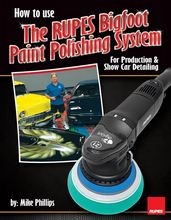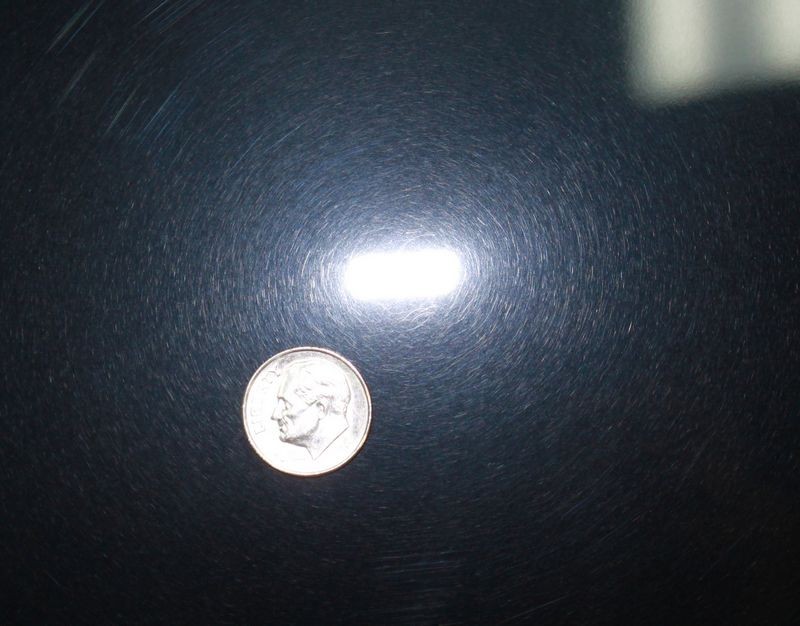Wet Buffing Technique
The Wet Buffing Technique
Most compounds and polishes should be used so that there is enough product on the surface to maintain a wet film while the product is being worked. The wetness of the product is lubricating the paint as the abrasives abrade the paint and cushion or buffer the abrading action so the abrasives don’t simply scour the finish leaving behind what we call micro-marring or hazing the paint.
Micro-marring, Hazing or Tick Marks
Tip: Wet film behind your path-of-travel
Everyone new to buffing wants to be told some easily identifiable sign that they can use to tell when it`s time to stop buffing and it`s not that simple, so here`s an indicator I`ve always used and share in our detailing classes.
As you`re making a single pass with the polisher, the paint behind the path-of-travel should have a visible wet film on it. If the paint behind the pad is dry and shiny, you`ve run out of lubrication and you`re dry buffing.
Turn the polisher off. Wipe the residue off and inspect using a Swirl Finder Light to make sure you didn`t dull or micro-mar the paint, you usually won`t cause any harm, but pay attention when your running the polisher and don`t buff to a dry buff. If you do, you can quickly re-polish that section by cleaning your pad and adding a little fresh product and making a few new section passes.
Wet film behind your path-of-travel
Related Articles
How-To do a "Section Pass" when Machine Polishing with a DA Polisher
How to prime a foam pad when using a DA Polisher
The short how-to guide for using a DA Polisher
How to maximize the ability of your DA Polisher for show car results!
How to clean your foam pad on the fly
How to dry a foam pad after hand washing
Why it`s important to clean your pads often...
Kissing the Finish
How to use a microfiber bonnet to remove dried wax by machine
:buffing:
Results 1 to 1 of 1
Thread: Wet Buffing Technique
-
05-23-2011, 08:51 AM #1
Wet Buffing Technique
Mike Phillips
Host - Competition Ready on Velocity Channel
Director of Training Autogeek & Marine 31
Competition Ready Facebook Page
Mike Phillips Facebook Page
Twitter
Instagram
Click on a book to get your own copy.







Thread Information
Users Browsing this Thread
There are currently 1 users browsing this thread. (0 members and 1 guests)
Similar Threads
-
Boat buffing and RV buffing.
By OnTheSpotMobile in forum Professional Detailer General DiscussionReplies: 3Last Post: 06-11-2012, 10:05 AM -
PC, buffing and Buffing bonnets
By richydelsolsir in forum Car DetailingReplies: 10Last Post: 08-18-2005, 06:17 PM -
Orbital buffing vs random orbit buffing??
By WS6Fury in forum Car DetailingReplies: 2Last Post: 02-17-2003, 04:30 AM -
technique
By medic in forum Car DetailingReplies: 6Last Post: 05-06-2002, 06:26 PM -
Klasse application/buffing technique
By MarcBickham in forum Car DetailingReplies: 10Last Post: 11-02-2001, 11:19 PM








 Reply With Quote
Reply With Quote
Bookmarks